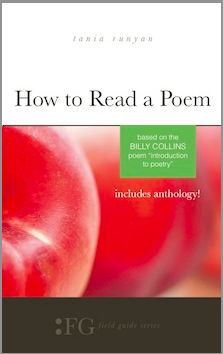From 1969 to 2012, high school Latin and English teacher Diane Flint taught everything from 7-12th grade English; Latin I, II, III; Myths, Legends, Fables; to creative writing and other special classes. She served as chair of the English department and sponsor of Honor Society and Fellowship of Christian Athletes (FCA).
She was also my teacher.
Miss Flint (she’ll always be “Miss Flint” to me) and I recently interacted about her teaching texts and methods, and while I may be biased, I feel her answers reflect her heart as a guide—a mentor—for anyone who wants to help a student love literature. Listen in on part two of our conversation.
ANN KROEKER: Is the theme “the heroic” still a central theme in the curriculum?
DIANE FLINT: I believe the theme of the “heroic” is still a central theme in most curricula. With much focus on military heroes, everyday heroes, even so called “sports” and “music” heroes, it certainly is relevant. My senior students did pick up well on the heroes in literature. Many loved the stories of Beowulf, Gilgamesh, King Arthur, Sir Gawain, Achilles, Malcolm in Macbeth, and others containing a specific hero, and I believe this is true in all levels of literature.
AK: Do you believe it’s important to teach such a theme? Why?
MISS FLINT: I do believe it important to teach this theme. In my opinion it “speaks” to all of us to experience a hero and his actions. Typically heroes are accidental—in that they don’t set out to become heroes—it just happens. I think when people read about heroes—factual or fictional, it teaches that anyone, absolutely anyone, can be a hero in any given situation. I would like to think that all our students have someone who is a “hero” to them—a parent, a teacher, a coach, a mentor in some area of their lives and that the idea of heroism resonates with them. Teaching values and the humanity in heroism is important.
AK: What are the challenges in doing so?
MISS FLINT: Challenges? Perhaps the hard part is making students click into the fact that all this is (or can be) real for them as well as a character in a story. Bringing the humanity up to date may be a stretch for some, but we do see heroes around us each day. Watching the news, reading a news blog, going to a movie such as Sully can emphasize the relevance.
AK: Who are your favorite literary heroes—both writers and actual stories?
MISS FLINT: I have many literary heroes—everyone from a modern writer named Jan Karon, to Chaucer from the 1400s. I loved reading segments of Beowulf to students as a dramatic piece and attempting to make the characters real—even Grendel, the monster, using various movements and voices. I see writers such as James Herriot as an outstanding non-fiction writer.
And I especially love Jonathan Swift’s satire. One would most likely not call Gulliver a hero, but the genius of the writing satirically and pointing out the foibles and silliness of humanity cause me to appreciate the messages he was able to convey in his works.
Poets like Tennyson, the Brownings, Whitman, Frost, Sandburg, along with the ancients are my heroes because they found a way with their words to communicate their observations in unique ways. I even love reading mysteries, attempting to solve the crime as I go, looking for the hero and for the perpetrator of the crime. Building suspense, building characters, embracing language that draws the reader in are all heroic traits to me.
AK: How do you define a hero?
MISS FLINT: To me a hero is one who risks himself for others. He may deliberately—or even without thinking—put himself in harm’s way. With one act he moves over into the category of “hero.” And in another sense, a hero is someone who cares enough to make a difference in others’ lives. He may not even realize that he is being revered or emulated because of his actions, but others see that special something in him that is special.
AK: Do you believe there is such a thing as “the hero’s journey”? Is it really that cut and dried, as some make it out to be?
MISS FLINT: When asked about “the hero’s journey, ” I am drawn to The Pilgrim’s Progress as Christian sets out to find heaven. The journey Bunyan uses is filled with real temptations, difficult stumbling blocks, enticements of all sorts. It is an allegory that mimics a person’s journey through life. I am not certain it is as cut and dried as some make it out to be. I think every experience is our journey whether we become a hero or not. A “journey” is life experience—the good, the bad, the trials, the joys, the friends, the enemies, the immaturity, and maturity that come with age. I guess I would say, no, I do not find it as “cut and dried” as some would say.
As I think about this issue, I know that we probably do not consciously recognize the people around us as heroes. However, looking back, I know that I had students who in my eyes fit into that category. The student who dealt with a gravely ill parent, the one who raised a child while attending school, the ones who worked hard and made great strides in learning because they wanted to be the first in their families to graduate from high school or to attend college, the athlete who persevered even though injury caused him to have three major surgeries for the same injury and then was unable to participate in the sport he loved, the student who really struggled with comprehension but who spent extra time with me after school reading and discussing the material until it sank in. I could go on and on. We do have everyday heroes all around us.
Photo by Sau Rieng Nguyen, Creative Commons license via Flickr. Post by Ann Kroeker, co-author of On Being a Writer: 12 Simple Habits for a Writing Life that Lasts.
________________________

“I require all our incoming poetry students—in the MFA I direct—to buy and read this book.”
—Jeanetta Calhoun Mish
- Life Notes: Tea is Necessary - February 3, 2017
- Interview with an English Teacher, Pt 2: The Heroic in Literature - January 27, 2017
- Interview with an English Teacher, Pt 1: Texts and Teaching - January 20, 2017

Bethany says
“Building suspense, building characters, embracing language that draws the reader in are all heroic traits to me.” Such an interesting thought. Glad you shared this interview with us.
Ann Kroeker says
Everyday heroes all around us. And Miss Flint is a hero to me. Seriously, she modeled leadership and servanthood when I was her student and while I saw it, I didn’t appreciate it as much as I have during the years I’ve observed her as an adult. I admire her generosity, wisdom, and heart as she loves people well.